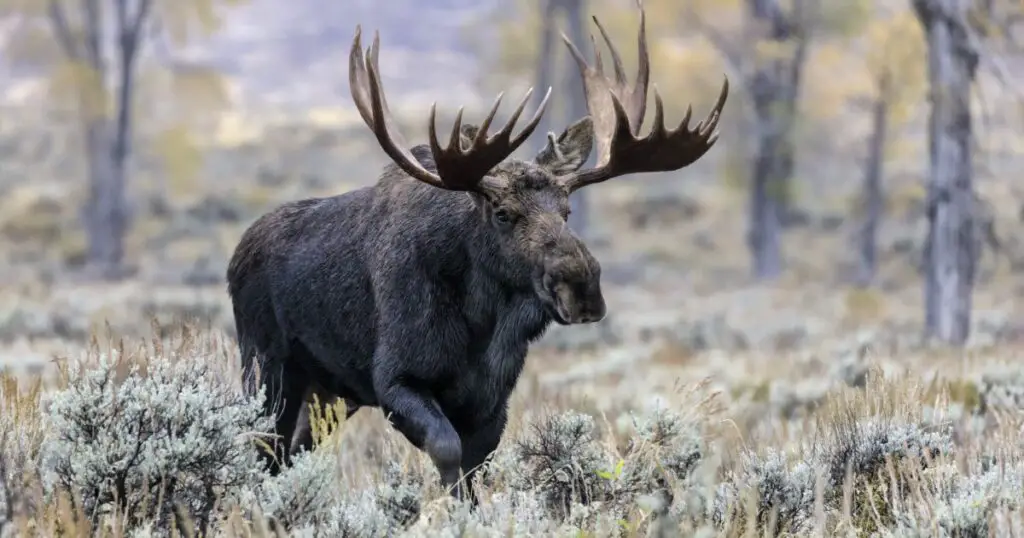Have you ever been on a forest hike and unexpectedly locked eyes with a towering moose? The experience is nothing short of mesmerizing. But just how big are moose compared to other cervids? We will reveal that today in our moose size comparison (moose vs other big deer).
Revered as the titan of the deer family, the sheer size of a moose has a way of leaving an indelible mark on our memories. With a hulking presence and antlers that seem to embrace the sky, the moose is one of nature’s true wonders, especially in the sprawling landscapes of North America and Europe.
But in the vast world of deer, where does our beloved moose fit in size-wise? While we often marvel at the sheer size of the moose, how does it stack up against its cervid kin.
That is exactly what we will talk about today. Also, we will delve into other essential information about these animals and their ecosystems.
Moose Size and Physical Features
The moose (Latin name, Alces alces) isn’t just emblematic of North America’s wilderness but is the giant of the Cervid (deer) family.
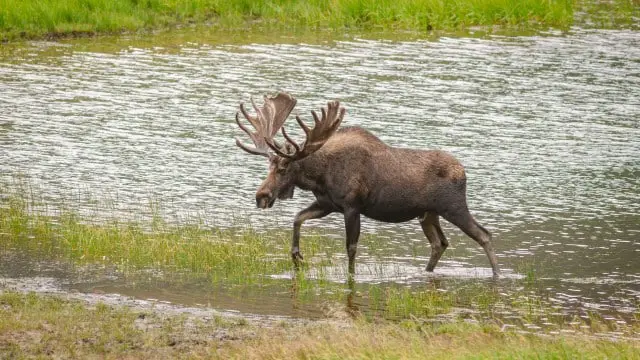
Their presence, for those who’ve had the chance to see them in their natural habitat, is nothing short of awe-inspiring. Let’s dive deeper into the majestic stature and unique attributes of the moose.
Dimensions and Weight
Male moose are significantly larger than females. We refer to male moose as bulls, and they can weigh between 850 and 1,500 pounds.
Some particularly well-fed individuals in prime habitats can even exceed this weight range.
On the flip side, female moose (also referred to as cows) usually fall in the 500 to 800-pound range.
As well as heavy, moose are exceptionally tall. Standing between 5.5 to 6.5 feet at the shoulder, a moose can seem even taller when you factor in their head and antlers.
In fact, bulls can sometimes reach up to 9 feet from hoof to antler tip.
Antlers
One of the moose’s standout features is, without a doubt, its antlers. A mature bull moose can sport antlers that stretch an impressive 6 feet across.
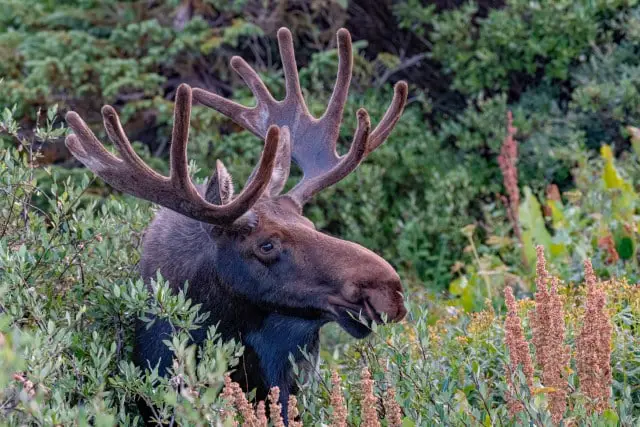
Moose antlers are broad, flat, and palmate, resembling an outspread hand. Throughout spring and summer, these antlers grow, reaching their full span by autumn, just in time for the mating season.
As well as creating an impressive (and sometimes intimidating) look, bulls use their grand antlers for combat, facing off against other males. They also use them to woo females.
The sound of these antlers crashing together during combat between bull moose is common in their habitats during the fall.
Unique Features and Physique
Moose have some distinctive physical features. As well as an elongated face and pronounced snout, they have a flap of skin under their throat, often referred to as the “bell” or dewlap.
Wildlife enthusiasts aren’t yet certain about the exact purpose of the dewlap, but some suggest it may play a part in mating rituals.
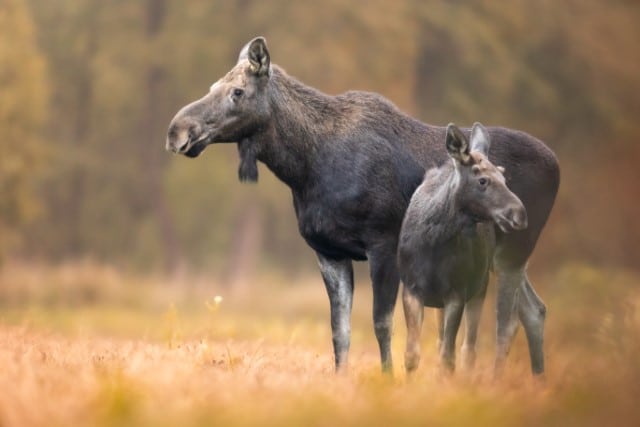
Moose also boasts a noticeable hump over their shoulders. Contrary to popular belief, this isn’t a fat storage site like a camel’s hump.
Instead, it’s primarily made of muscle that aids the moose in navigating often challenging terrains.
These animals have long, study legs that let them easily wade through deep snow and water. Moose, in fact, are excellent swimmers. They can cover impressive distances in the water, and they can even dive to munch on aquatic plants.
Color and Coat
Moose have evolved to live in cold climates, which is why they have a dense, double-layered coat.
The underlayer is woolly and thick, and it is overlaid with the longer guard hairs of the outer layer.
Depending on the time of year and the specific moose subspecies, their coat can range in color from a light golden brown to a deep, almost black shade.
Comparison to Other Big Deer Species
Below we will talk about some other large deer species and compare them to moose.
Red Deer
There are red deer populations widely distributed over European and some Asian terrains. This species is renowned for its majestic bearing.
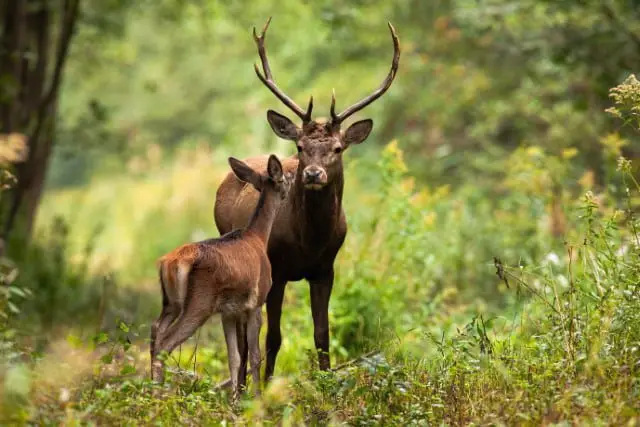
Mature male red deer are called stags, while the females are referred to as hinds. While stags generally weigh between 350 to 530 pounds, the hinds are slightly lighter, with average weights of between 260 and 370 pounds.
Red deer certainly stand tall, with an average shoulder height of approximately 4 feet, they fall short when compared to a colossal moose.
Male red deer have tall, impressive antlers with branches.
These regrow annually, and they become more complex and elaborate with each cycle.
A significant difference between moose antlers and red deer antlers is that moose antlers have palmation while red deer ones do not.
Another distinctive feature of red deer is their reddish-brown coat. In males, it’s often a deeper shade that tends to stand out against the green of the forest during the rutting (mating) season.
Red deer are known for forming intricate social structures in their habitats.
Elk
Also recognized by the name “wapiti”, a term rooted in the Native American language translating to “light-colored deer,” elk are formidable in their size and stature, being second only to the moose in the deer family hierarchy.

Elk bulls have an average weight of between 600 and 1,100 pounds, which is nearly double that of other deer species.
Female elks (known as cows) tend to weigh between 450 and 600 pounds.
The elk’s majestic form, with the males standing close to 5 feet at the shoulders, makes them one of the moose’s closest competitors when it comes to size.
Elk antlers are indeed an architectural marvel of nature, showcasing a meticulous network of tines growing in various directions, offering a visual delight and attesting to their years of survival and wisdom.
These creatures reign over the forest, their mating calls reverberating, a deep-tone roar followed by high-pitched screams, signaling the impending mating season, a testimony to their deep-rooted presence in the forest ecology.
Their habitat and lifestyle offer a deep insight into the elk’s behavioral pattern, shedding light on how their considerable size plays a pivotal role in asserting dominance and ensuring survival in the wild.
This somewhat echoes the authoritative presence of moose in their habitat.
Sambar Deer
Sambar deer have a significant presence in the diverse landscapes of Asia. They’re native to the dense forests and grasslands of the region.

The males exhibit a robust build, weighing between 400 to 700 pounds, presenting a substantial figure in the wild.
The females, while slightly lesser in build, harmonize perfectly with the rugged terrains they inhabit.
With a height ranging between 4 to 5 feet, they carve a niche for themselves in the deer family, albeit not quite reaching the moose’s grandiose stature.
An interesting facet of their physical attributes is their antlers, growing rugged and branching out in a lyre shape with three pronounced tines.
Their coat, a canvas of dark brown or gray with occasional hints of reddish hues, serves as camouflage, aiding in their survival strategies. This is a rich testimony to this animal’s adaptability and resilience in the wild, a trait shared with the mighty moose.
Fallow Deer
Present in Europe and parts of Asia, the fallow deer are relatively smaller but stand out with their distinctive characteristics.
Males exhibit a weight range of 130 to 220 pounds, which obviously makes them much smaller than moose.
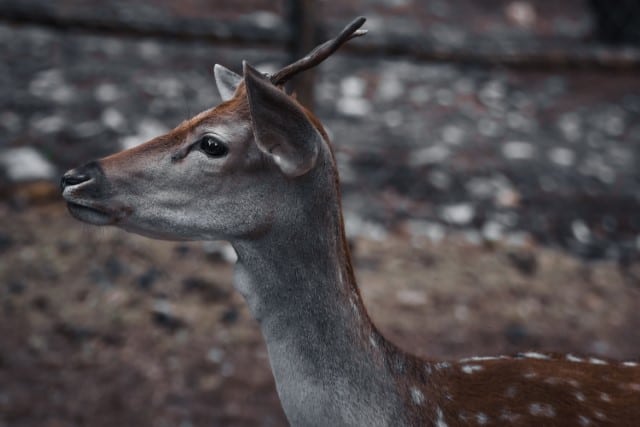
Females are even tinier, with an average weight between 60 to 110 pounds.
Interestingly, fallow deer have palmate antlers. This is the sole way they are similar to the moose.
Fallow deer coats offer a variety of presentations, showcasing a rich palette from common and melanistic to menil and even white.
They’re a striking example of nature’s vibrant diversity, albeit on a scale diminutive compared to the majestic moose.
Other Reflections: Moose Size Comparison
Now that we’ve delved deeply into the various characteristics and features of each deer species, it’s clear that the moose stands unparalleled when it comes to sheer size and grandeur.
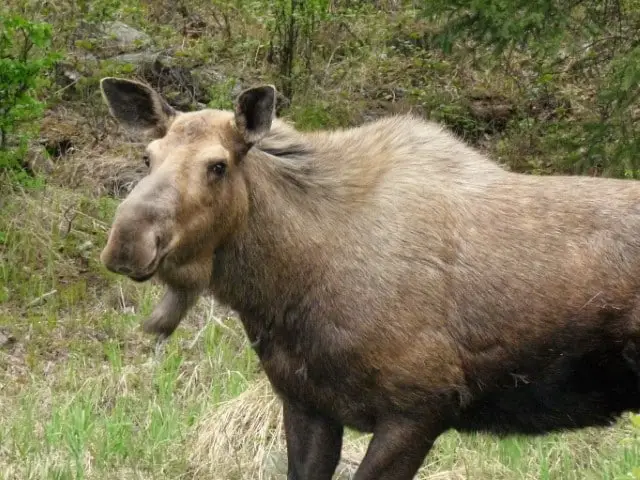
While each of the deer species, the red deer with its vibrant social dynamics, the elk with its deep-toned mating calls, the sambar with its rugged and adaptive features, and the fallow with its diverse coat patterns, bring a rich narrative to the ecological tapestry, the moose emerges as the titan. It oversees the deer kingdom with an undeniable presence that is both grand and awe-inspiring.
From the broad and palmate antlers to the towering height and massive body build, the moose stands tall physically and represents a pillar of strength, resilience, and grandeur in the animal kingdom.
As we appreciate the unique features and traits of each species, we find that the comparison transcends mere physical dimensions and delves into a rich narrative of survival, adaptation, and the vibrant dance of life that each species brings to the ecosystems they inhabit.
We see a rich variety of life, with each species painting a vivid picture of the diversity and complexity of life on Earth, showcasing an intricate ballet of survival and harmony where each entity, despite the difference in size, plays a vital role in maintaining the delicate balance of the ecosystem.
The comparison, while rooted in physical attributes, extends into a deeper understanding of the rich biodiversity and the unique roles each species plays, with the moose standing tall, both as a physical giant and a pivotal entity in the vibrant tableau of the deer family.
Factors that Affect Species Appearance
Diving into the realm of deer species and their diverse sizes offers more than just a surface-level comparison. To truly grasp why these animals grow to their respective sizes, it’s crucial to delve into the myriad factors that influence their growth.
While evolution certainly plays a part, it’s the nuanced blend of environmental conditions, genetics, and adaptive behaviors that dictates their stature. Let’s dissect these elements further for a clearer picture.
Environment & Food Supply
An animal’s environment is foundational in determining its growth. In regions rich in resources—bountiful food, clean water, and ample shelter—deer have the potential to grow larger and healthier.
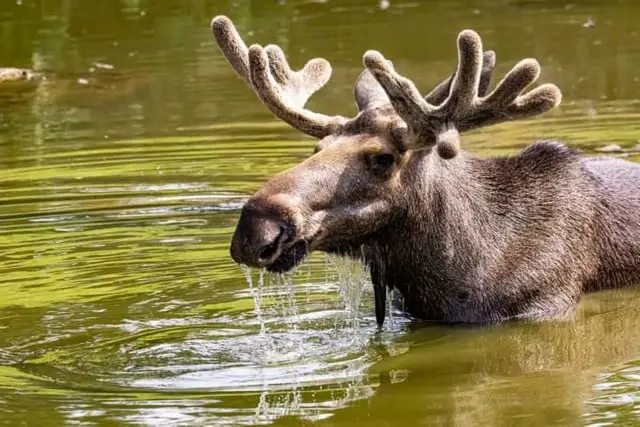
Take, for instance, the moose of Alaska. The lush Alaskan forests, coupled with nutrient-dense waters, create a haven for these creatures, allowing them to attain sizes larger than their cousins in less resource-rich areas.
The Role of Predators
Predators, or the lack thereof, significantly shape the evolutionary trajectory of deer. In areas teeming with predators, being nimble and quick could be a lifesaver, making smaller stature advantageous.
Over generations, this pressure from predators could mold the size and even behavior of the deer species, making them more agile and alert.
Genes Matter
While the environment provides the playground, genetics write the rulebook. In regions where being bigger is synonymous with survival or better reproductive success, those genes promoting size are more likely to be passed down.
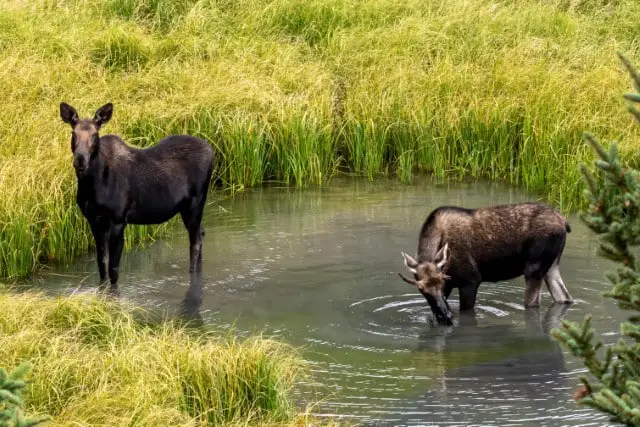
Over countless generations, these genetic preferences can influence the predominant size of the population, either enhancing or reducing it.
Island Effects
Islands, with their isolated ecosystems, often witness unique evolutionary phenomena. The concept of insular dwarfism elucidates how limited resources on islands can lead to species, like deer, evolving to be smaller.
Conversely, in the absence of substantial predators, some island species might evolve larger statures, an effect termed insular gigantism.
A classic illustration is the Key deer in Florida, markedly smaller than its mainland white-tailed deer relatives, having adapted to its island confines.
Weather and Climate Influences
It’s no secret that climate intricately weaves into the evolutionary fabric of species. In colder climates, retaining body heat becomes paramount.

Here, larger body sizes are favored, as they conserve heat better, providing a survival advantage. This thermoregulatory need might explain why moose, equipped with their dense fur, predominantly inhabit the chillier terrains of North America and Europe.
Social Dynamics & Behavior
Beyond the physical world, the social environment of deer also impacts their size. In many deer species, males vie for mating rights, often through physical confrontations.
In such societies, being larger with grander antlers often tilts the balance in favor of the individual, leading to better mating opportunities.
Over time, this social dynamic can drive the evolution of larger males, as seen in the seasonal rituals of moose.
Human Impact
It’s impossible to discuss these natural processes without acknowledging the human factor. As we alter habitats, introduce or remove predators, or even hunt specific animals, we inadvertently exert evolutionary pressures.
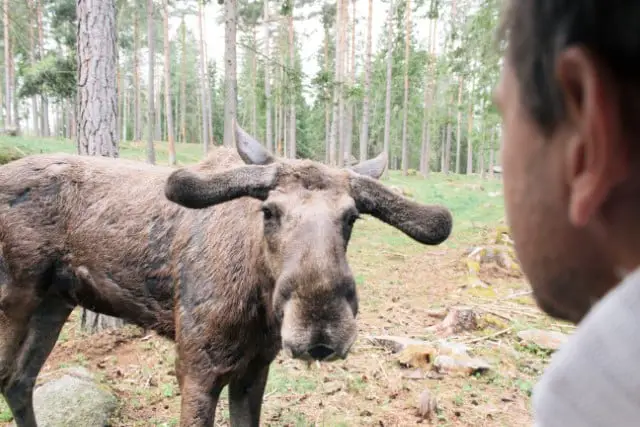
Such human-driven factors can accelerate or modify the natural growth patterns of deer species, emphasizing our role and responsibility in their ecology.
Related Frequently Asked Questions: Moose Size
You probably still have some questions about moose and their size. We will answer some of those below.
Why Are Moose So Big?
Even now that you’ve learned all about moose and their environments, you might still wonder exactly why they’re so extraordinarily large.
Need to Wade in Water
One reason moose need to be so tall is the fact that they need to wade and walk through bodies of water.
This is necessary because aquatic plants are an important part of the moose diet. That is why these animals always live in places that have bodies of water.
To Deal With Harsh Environments
Moose have evolved to live in harsh, cold environments with challenging winters.
In the winter, moose have to be able to force themselves into otherwise inaccessible spots to find food. They can use their antlers, body size, and sheer power to do this.
To Scare Away Predators
Of course, the moose’s size is also useful in keeping predators at bay. For example, wolves are much less likely to take their chances with an enormous moose than they are to hunt a whitetail deer.
The moose can use their antlers and long legs (that they can stomp on other animals with) to defend themselves.
How Big Do Canadian Moose Get?
Like other moose, Canadian moose are a simply enormous cervid species. They’re so large that most people are surprised to learn that they are part of the deer family.
Canadian moose are a little smaller than the Alaskan-Yukon moose. A male Canadian moose (Canadian moose bull) can weigh as much as 1,400 pounds. Their height at the shoulder can exceed 6 feet.
Final Thoughts: Moose Size Comparison
In making this comparison, we have gone through a wide variety of ecosystems, from tall mountains and forests to wide-open grasslands. The moose’s enormous size is proof of the remarkable diversity seen in the natural world.
But there’s more to size than meets the eye. It describes how the animal evolved, highlights its capacity for change, and reflects the part it plays in its ecosystem.
As we wind up, though, it’s important to remember that size is only one factor. No matter how big or small they are, deer make important contributions to the environment.
Red deer, elk, sambar, and fallow deer are all equally important to their respective ecosystems as the massive moose, and each has its own fascinating history and cultural significance.
The symphony of nature is complex and multifaceted, and the moose is a window into the vastness of nature. We honor life’s variety by drawing parallels to other members of the same family.
As we take a step back, let us not only reflect on the numbers but also marvel at the wonders of nature.
After all, there is something special about each and every moment spent in the outdoors, each heartbeat, and each breath.

